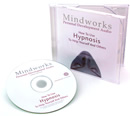
Hypnosis is a communication technique that may, or may not, induce a trance or a trance-like state; it is a temporary state of altered attention in an individual. In a clinical setting it is conducted by a hypnotherapist who has obtained specialized training and certification in the use of clinical hypnosis within the context of counseling, and psychotherapy. Hypnosis also can be conducted by alone – self-hypnosis. A hypnotic trance is a naturally occurring condition wherein one's attention is closely focused and relatively free of distractions. The individual’s attention may be focused internally (thoughts or images, or both) or externally (a place, a book, or a person). The focus of attention is so intense other stimuli in the environment are blocked out of conscious awareness for a time. Daydreaming and some forms of meditation are examples of trance states.
As a complement to psychotherapy, hypnosis helps people go into a relaxed, comfortable state to achieve specific therapeutic results. In clinical hypnosis, the therapist can make suggestions calculated to help individuals put together specific internal processes (feelings, memories, images and self-talk) that will lead to mutually-agreed-upon outcomes.
Suggestions made to an individual under hypnosis influence behavior when the listener: is relaxed, receptive and open to the suggestions; experiences visual, auditory, and/or bodily movement representations of the suggestions; anticipates and envisions the result of these suggestions.
These are made possible through the use of hypnotic language patterns. Hypnosis language patterns are composed of directed visualization, stories, guided memories, equivalence, repetition, and associative statements, and cause-and-effect.
Hypnosis carries very few risks. Hypnosis however is not advisable for individuals with certain medical problems, who are actively abusing drugs or alcohol, or who are delusional or hallucinatory. In the same manner, hypnosis should not be used for physical problems, such as pain, unless a physician has been consulted to determine underlying causes.
Hypnosis is not recommended for small children since they lack the required attention span to focus their attention. More interactive treatment methods can be used, however, such as art therapy, play therapy, storytelling, and guided visualization, during which helpful suggestions can be made to the child.
Hypnosis is often used with the purpose of uncovering memories which have been selectively blocked out. Hypnosis may or may not work in this regard. When memories do surface they may be painful and distressing, but not always necessarily so.
Some individuals may feel a little disoriented after hypnosis. If this is the case, the therapist and client should work together prior to the start of the session to ensure that the client is fully alert before leaving the therapist's office.
Clinical hypnosis has been employed in a variety of therapeutic applications, among them are:
• Preparation for Medical or Dental Procedures
• Confidence Building
• Help with Life Transitions
• Treating Phobias
• Insomnia
• Interpersonal Problems
• Depression
• Pain Management
• Stress and Anxiety Management
• Habit Control
• Academic and Athletic Performance
• Removing Blocks to Motivation and Creativity
• Treatment of Grief and Loss
 Thanks for visiting this blog. My name is Felix and I'm a part-time magician who is also interested in NLP and hypnosis. For more infos on hypnosis, please visit my website:
Thanks for visiting this blog. My name is Felix and I'm a part-time magician who is also interested in NLP and hypnosis. For more infos on hypnosis, please visit my website: 

No comments:
Post a Comment